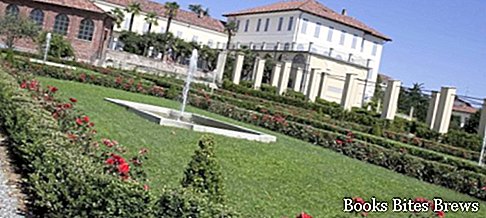What to see in Biella, itinerary including the main monuments and places of interest, including the Duomo, the Baptistery, the San Sebastiano Church, the Civic Museum and Palazzo Gromo Losa.
Tourist information
Bathed by the Cervo torrent and located at the foot of the Biella Pre-Alps, Biella was an ancient Celtic settlement, which increased its importance in Roman times.
During the Middle Ages, with the name of Busella, it was a possession of the Church, until in the middle of the fourteenth century it passed to the Visconti, before becoming Savoy domain in 1379.
The inhabited center is formed by the nucleuses of Biella Piano, on the plain, and of Biella Piazzo, on the hills, as well as by the recent Chiavazza district, of more recent origins.
The Duomo, built in the fifteenth century using a pre-existing religious building from the tenth century, was restored between the seventeenth and nineteenth centuries.
On that occasion, the beautiful porch was added, built in the Gothic style.
Inside there are remarkable frescoes from the fifteenth and sixteenth centuries, as well as a seventeenth-century pulpit.
Next to the Cathedral is the Baptistery, built in the tenth century in pre-Romanesque forms, with a central plan, dome and four opposite apses with arched niches.
The remains of fourteenth-century paintings are preserved inside.
Not far away, the Romanesque bell tower of the former Church of Santo Stefano rises for 53 meters, dating back to the thirteenth century and containing a portion of more ancient origin.
Nearby is the church of the Holy Trinity, built between 1626 and 1750.
Recommended readings- Alessandria (Piedmont): what to see in 1 day
- Langhe (Piedmont): what to see among castles, villages and vines
- Piedmont: Sunday day trips
- Oropa (Piedmont): what to see
- Cherasco (Piedmont): what to see
What see
The Church of San Sebastiano, which was erected in the sixteenth century and renovated in the nineteenth, has elegant external forms, with the facade built in 1882.
Inside, where there is a remarkable Renaissance style decoration, many works of art are kept, including the Lanino altarpiece, the choir, the inlaid wooden lectern made by Mellis in 1546 and the Ferrari polyptych of the sixteenth century, located near the main altar and depicting the Virgin and Child with Saints.
The Civic Museum houses archaeological finds, paintings by local artists and various works of art, including 9th century frescoes, ceramics and artistic Murano glass.
Biella Piazzo, connected to Biella Piano by a funicular, has kept the medieval structure unchanged, with palaces from the fifteenth and sixteenth centuries, including the Casa dei Teccio, in the area of Piazza Cisterna.
The Church of San Giacomo, located in the square of the same name, was built in the twelfth century in Romanesque style, with a Gothic facade and bell tower, built in the fourteenth century.
Next to this church is the remarkable Palazzo Gromo Losa, with a Renaissance courtyard.
Half a kilometer from Biella Chiavazza there is the Park of the Collina di San Gerolamo, acquired by the Sella family in 1864, who transformed the sixteenth-century monastery that was part of it into a villa.
The villa houses the Museum of Alpine Photography Villa Sella, containing a remarkable photographic documentation.
Next to the villa is the Renaissance Church of San Gerolamo, where there is an interesting wooden choir, the work of Evangelista da Cremona performed in the sixteenth century.
In the surroundings of Biella, 5 km away, there is a fortified medieval rural village, characterized by houses with corner towers, where the inhabitants took refuge in case of need.




